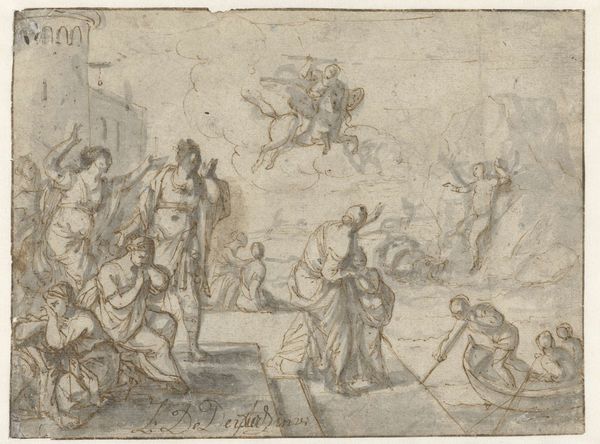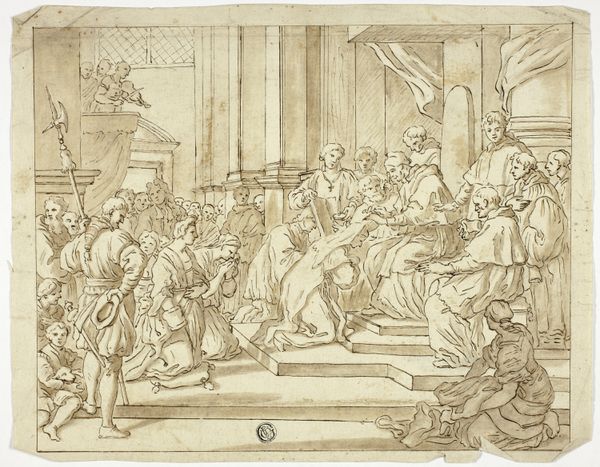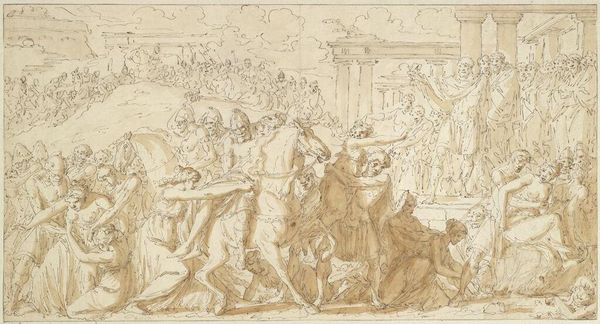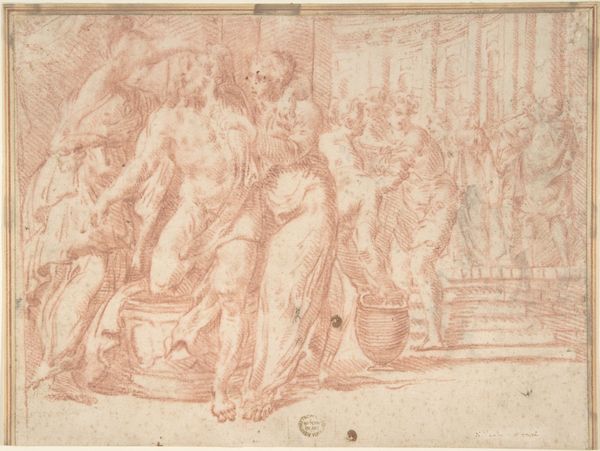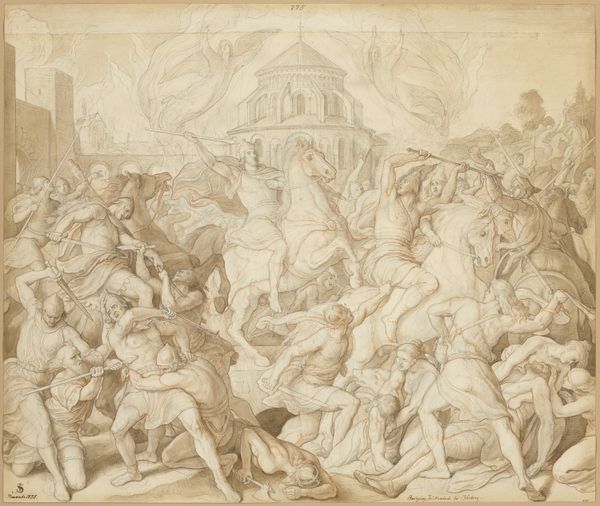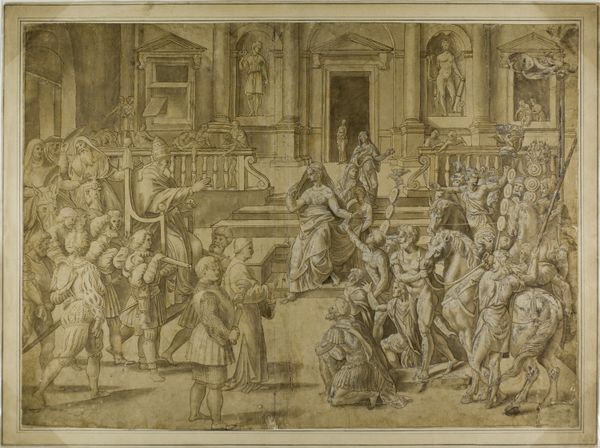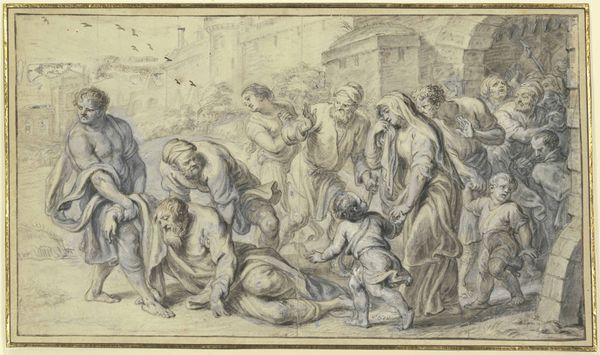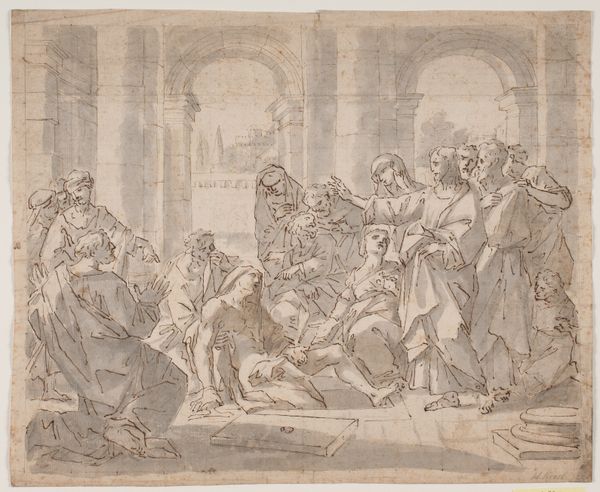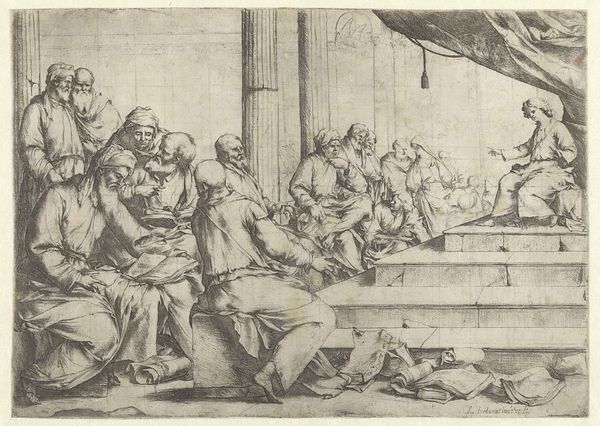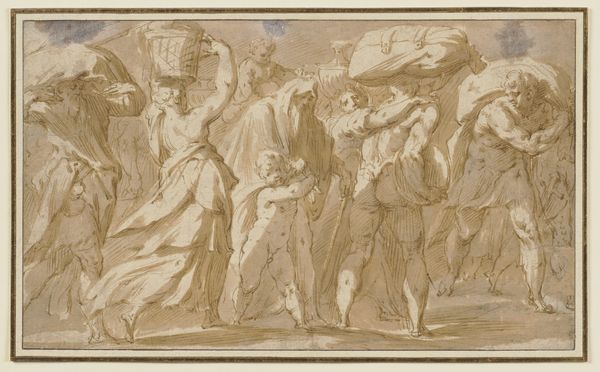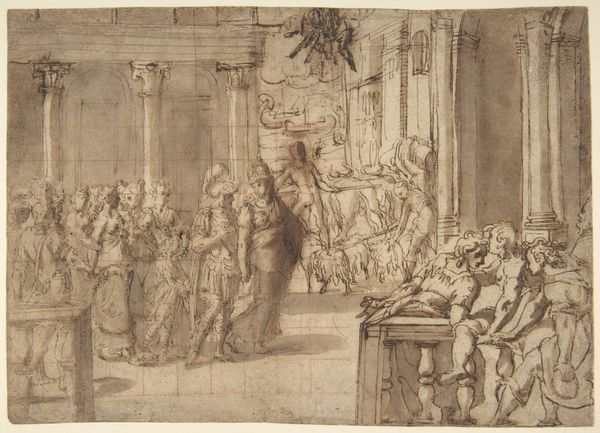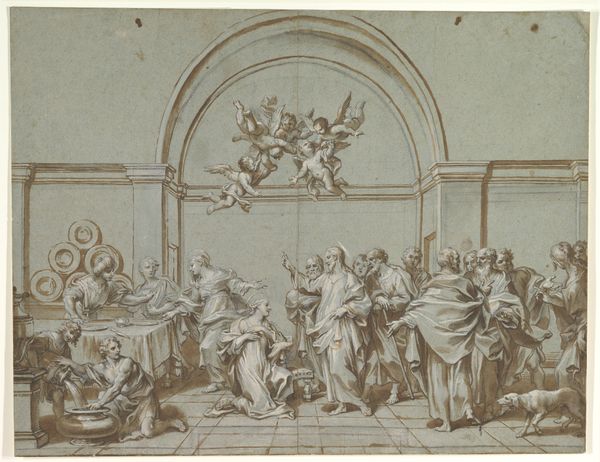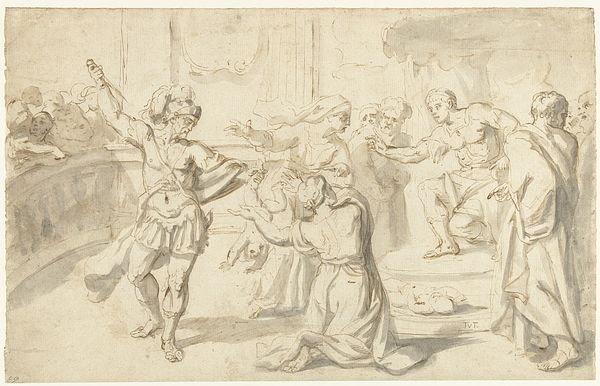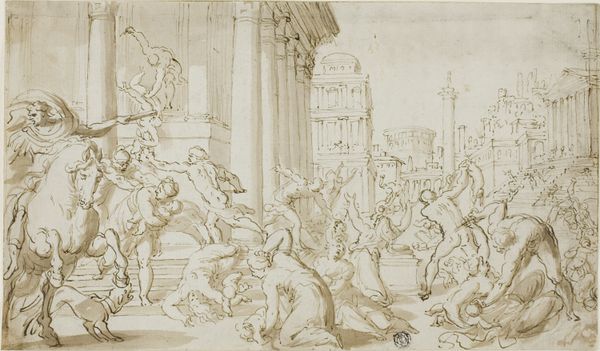
drawing, paper, ink
#
drawing
#
narrative-art
#
etching
#
figuration
#
paper
#
ink
#
ink drawing experimentation
#
history-painting
#
italian-renaissance
Dimensions: height 202 mm, width 228 mm
Copyright: Rijks Museum: Open Domain
Marco Pino created this drawing, Alexander Taming Bucephalus, in the mid-16th century, during the High Renaissance in Italy. The story of Alexander the Great, a symbol of youthful ambition and future leadership, would have resonated with the aristocratic and educated circles in which Pino worked. The classical narrative intersects with the social mores of Pino’s time. The emphasis on the male figures—Alexander, his father Philip, and the horse Bucephalus—highlights a patriarchal structure where power and control are virtues. Yet, the presence of women and children in the composition introduces an intimate, human element, softening the otherwise heroic narrative. Note how Pino uses light and shadow to guide our eyes. The muscular tension of the horse and the focused determination of young Alexander become a lesson in the power of human will.
Comments
No comments
Be the first to comment and join the conversation on the ultimate creative platform.
